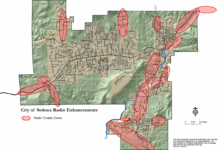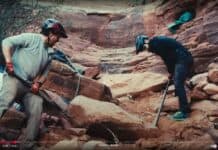The “three whammies” — high gas prices, the Brins fire and Uptown construction — took their toll on Sedona tourism this summer, City Economic Planner Jodie Filardo said.
Larson Newspapers
________________
The “three whammies” — high gas prices, the Brins fire and Uptown construction — took their toll on Sedona tourism this summer, City Economic Planner Jodie Filardo said.
The three-month averages for June, July and August of 2006 showed a mere 1-percent increase from 2005 in sales tax collections by the city, according to data provided by the Arizona Department of Revenue.
Despite this year’s difficulties, a study published in August by Elliott D. Pollack & Company showed that tourism is the base of Sedona’s economy — which, Filardo said, is no surprise.
City of Sedona staff and the Chamber of Commerce worked together in providing information to Pollack, including a study by the Behavior Research Center in 2005.
The behavior study found common characteristics of the average visitor such as age, income, type of accommodations, purpose of the trip and party configuration.
This data is based on 856 interviews conducted at various times throughout the year, including peak and off season.
According to this study, an estimated 2.8 million people visit Greater Sedona each year, generating $587.6 million in economic activity.
Visitor profiles are compiled by the chamber on a regular basis to give an idea of who is coming to the area.
“We try to do a visitor profile every three years,” Sedona Chamber of Commerce Vice President and Director of Tourism Jennifer Wesselhoff said.
This ensures the chamber’s marketing tactics are research based, Wesselhoff said.
The behavior study found that just over half of the visitors stay overnight, generally in a hotel or motel and drove to Sedona for a leisurely trip, and there’s a 62-percent chance they are not from Arizona.
This information, combined with what was gathered by the city manager’s office, was included in the tourism impact study.
The impact study measured the regional implications of tourism based on sales or output, earnings and job creation.
Visitors spend an estimated $372.7 million on transportation, lodging, food and beverage, retail, entertainment and “other” each year.
Filardo said the top four revenue generators are accommodations, retail, restaurants and bars — which are often tourist-driven — and construction.
In June, July and August of 2006 accommodations generated $307,053.88, retail brought in $304,401.94, $136,363.64 came from restaurants and bars, and $174,193.32 from construction.
Accommodations revenue increased by 6 percent from 2005, retail dropped 1 percent, restaurant and bars dropped by 14 percent and construction increased 15 percent.
A total of 10,330 jobs are a result of Sedona’s tourism-based economy.
It directly generates 7,660 jobs — 5,490 in Yavapai County and 2,170 in Coconino — and another 2,670 indirectly — 680 in Yavapai and 220 in Coconino.
These jobs generate a total of $231.2 million in wages — $148 million from direct jobs and $30.5 from indirect — for both counties.
Filardo said the information shows the city that its investments in the tourism industry are warranted.
Wesselhoff hopes the study brings more awareness to the fact that tourists pay for city services.
Three-month sales tax collection summaries are now available on the city’s Web site, www.sedonaaz.gov, under the city manager’s department. Filardo will update them regularly.


















